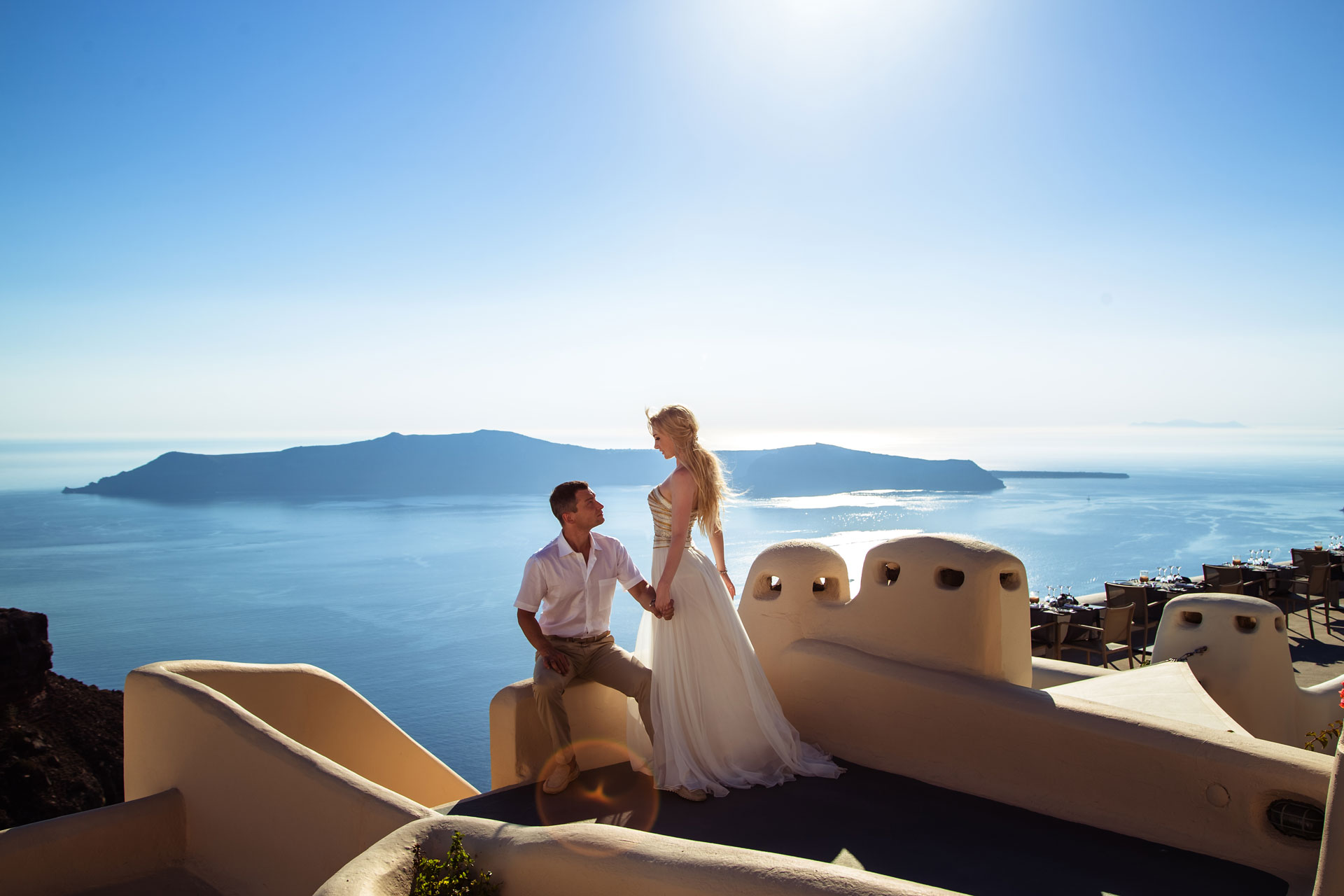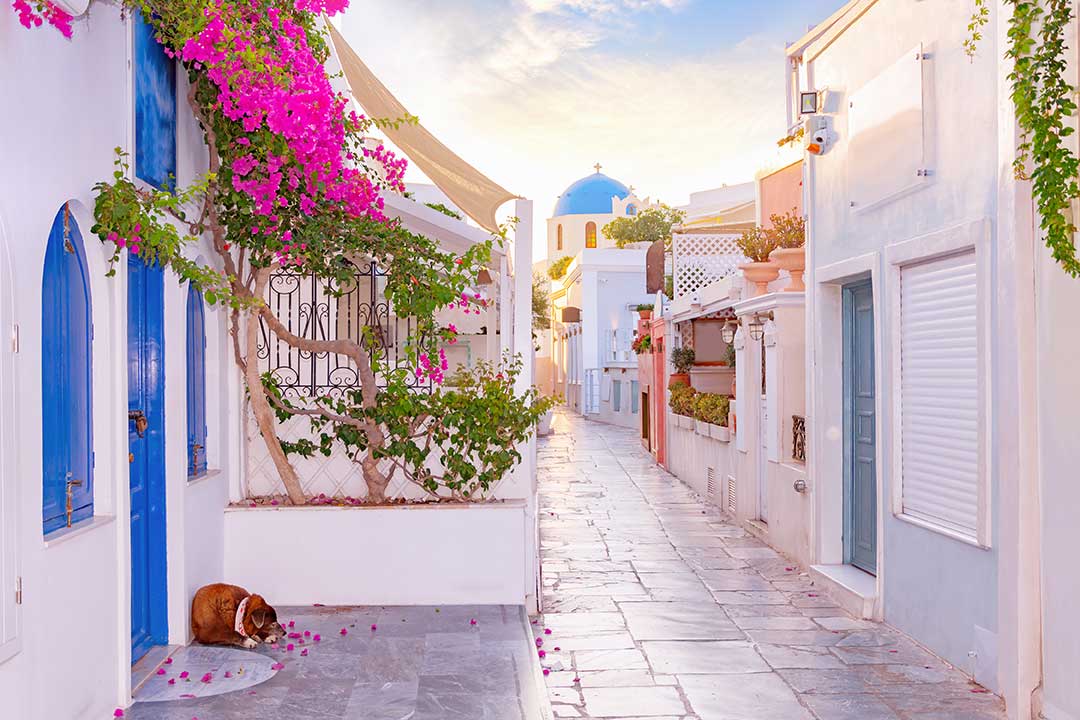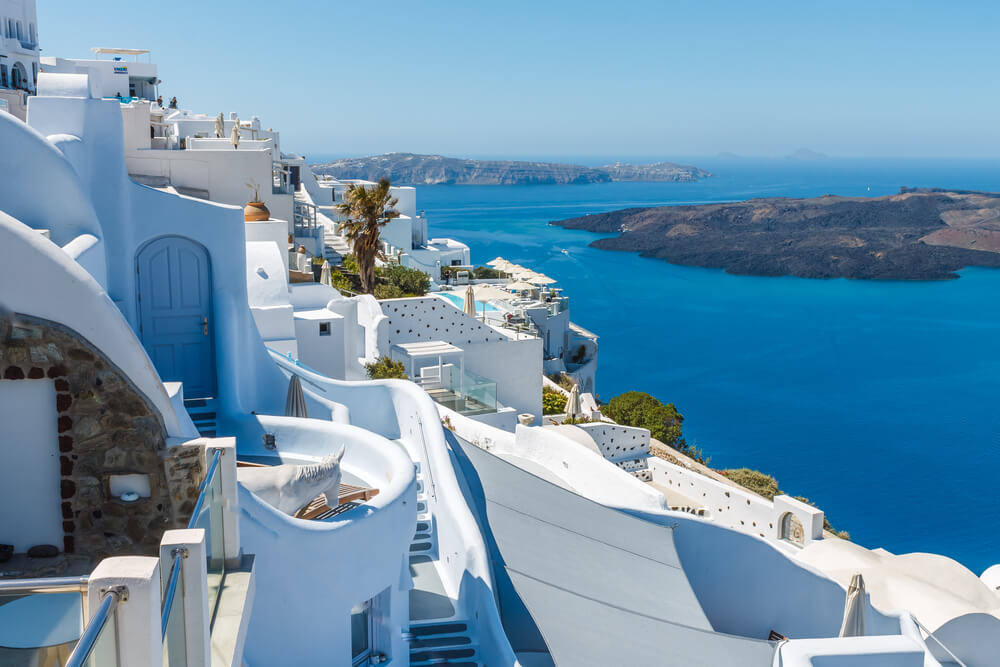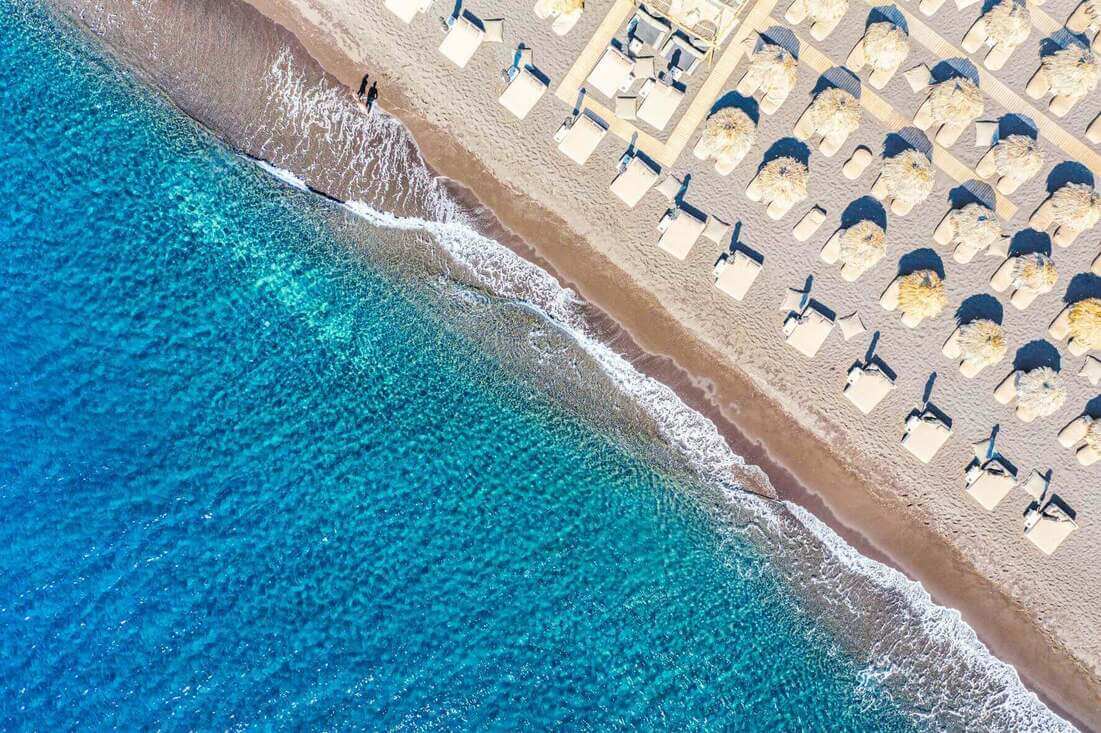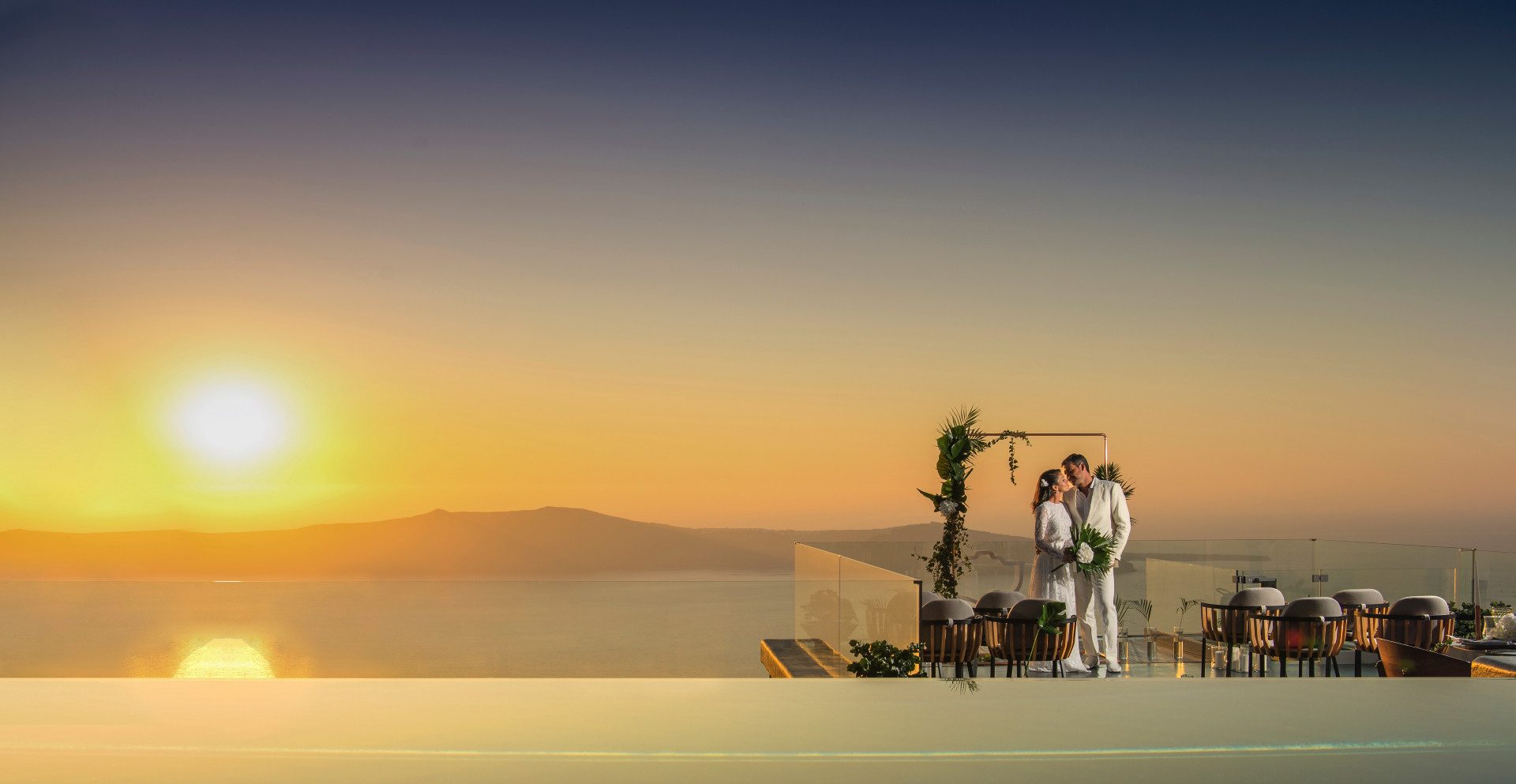All You Need to Know About Caldera Santorini
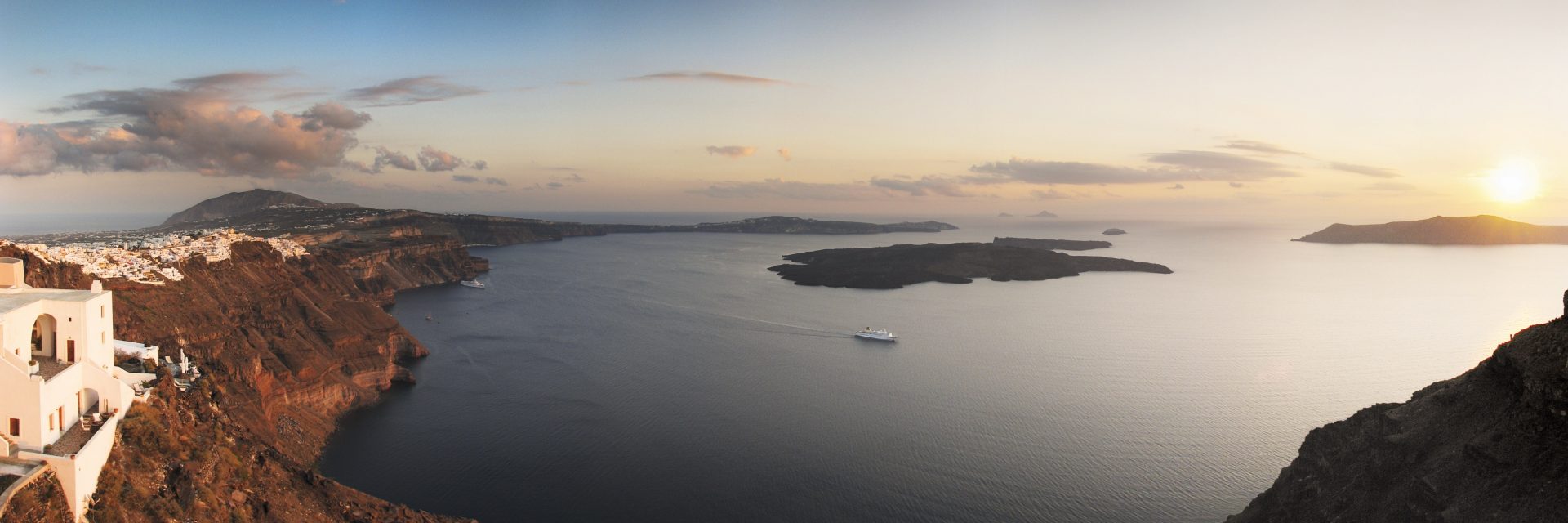
Santorini is probably the most popular and magnetic Greek island, along with its sibling, Mykonos. With azure-domed churches overlooking the vastness of the Aegean Sea, a sun-bleached countryside draped with whitewashed sugar-cube villages, narrow, cobblestone streets, and some of the most heart-stopping views of the glistering Mediterranean Sea, Santorini feels like a small paradise, indeed.
Amidst this unparalleled allure, the Caldera is one of the most emblematic components of the island. In fact, the Caldera in Santorini is a significant part of the Santorini history and has many interesting stories to share with those whose hearts are open to the Santorini narrative, be it volcano lovers, geology enthusiasts, history buffs, or simply worshipers of the Queen of the Cyclades! Here is a small overview of the history of the Santorini volcano and the imposing Caldera in Santorini.
1. From bliss to complete destruction to total regeneration and rebirth
Santorini is believed to be inhabited by a superbly advanced civilisation, the Minoans, who made constructing multi-storey houses with amenities like underfloor heating and indoor baths feel natural some millennia ago (at around 4000 B.C). The archaeological site of Akrotiri and the perfectly preserved remains of the Akrotiri settlement (formerly known as Kallisti) are proof of this elevated level of sophistication.
At this point, let’s also note that many accounts associate Santorini with the mythological island of Atlantis as they both seem to be using superb and pioneering technology and a civilisation that was light years ahead of their time. Could these two be one and the same?
Unfortunately, things took a different turn around 1,613 B.C., when a massive volcanic eruption destroyed the island, forcing its residents to seek other places to call home. That volcanic blast left a large half-moon shaped caldera in Santorini, surrounded by hundreds-of-metres-deep volcanic ash deposits. It also caused a massive tsunami that even reached the coasts of Crete and wiped the glorious Minoan civilisation for good.
When the dust settled, Santorini welcomed the creation of two separate volcanic islands in its laps, namely Aspronisi and Thirasia, which now form a circle in the heart of the Caldera in Santorini. Over the years, the Santorini volcano roared a few more times and gave birth to two more islands – Palaia Kameni and Nea Kameni (both uninhabited to date and made exclusive of lava rocks).
And, although one would expect Santorini to be sent to oblivion, loyal islanders were determined to redefine themselves and their land, and turn it back into a flourishing state, only in a different way this time. Guess what? They did precisely that. Santorini is now famed for its internationally acclaimed wines, which owe their supreme quality to the volcanic soils of the island. It is also a popular tourist destination for its unique beauty and appeal, not to mention the utterly romantic Santorini sunset panoramas you get from all around.
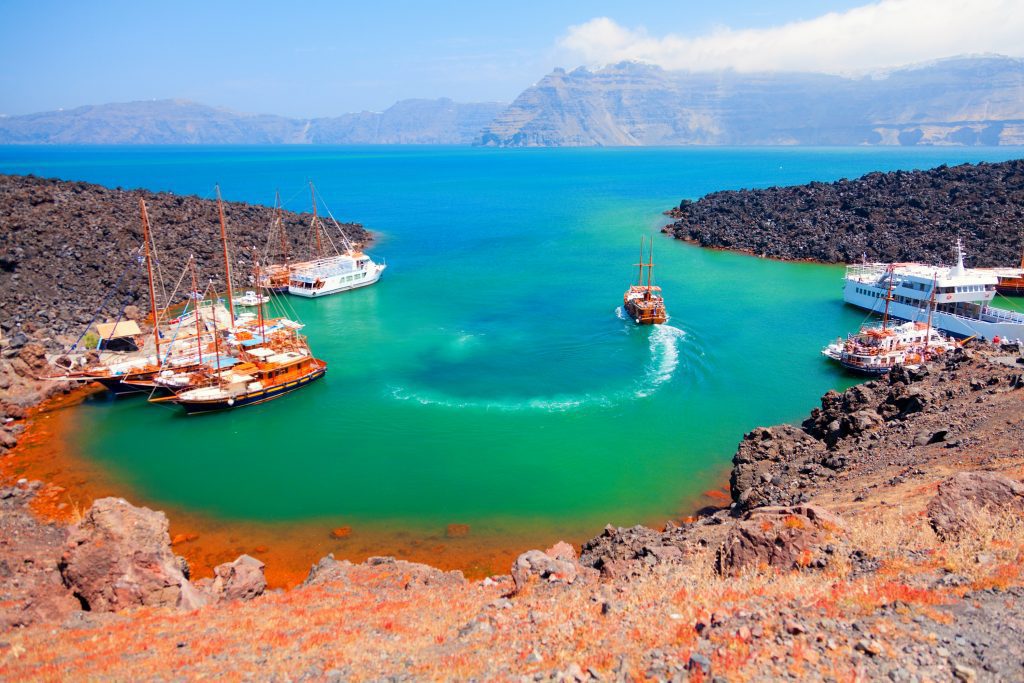
2. Exciting Facts About the Caldera and Santorini
- Before the catastrophic volcanic eruption, Santorini was called Stroggyli after its distinct circular shape.
- The Santorini eruption is believed to have been so destructive that it even caused considerable climate perturbations.
- The last natural disaster in Santorini’s history took place in 1956 (earthquake) and caused the destruction of 2000 houses and the collapse of the volcano’s magma chamber.
- The volcanic eruption that occurred in 4000 BC formed a cauldron that shifted the seascape of the entire Mediterranean forever. The climatic conditions of Santorini have also been altered after the formation of the Caldera.
- The caldera crater is massive with a width of 7 kilometres and length of 12 kilometres. It also reaches sky-high heights (980 feet), while standing about 1000 feet above sea level (and expands just as much below the sea level).
- What you see when you visit the Caldera today is the result of four (at least) calderas overlapping one another (partially) as it has been formed by shield volcanoes.
- The oldest caldera is the southern one and dates back to nearly 200 millennia ago. Following closely is the Skaros caldera (the next layer in the famous Caldera) which was formed nearly 70,000 years ago, way before the catastrophic eruption of the Minoan times that gave shape to the most recent caldera we all know and admire.
- The chapter of the history of the Santorini volcano is not yet closed. According to volcanologists, the island islands circling the Caldera are active. However, for the time being, they only emit hot sulphur gases.
- The Caldera of Santorini is considered one of the most prominent geographical and geological configurations on Earth. It has also been the main point of interest for numerous studies and research in the fields of Geology and Archaeology.
- According to Greek mythology, Santorini was home to god Zeus and one of his earthy families. Then, Zeus decided to sink the island causing massive floods, earthquakes, and a volcanic eruption with huge lava fountains and various mudflows to swallow up Santorini.
3. The Caldera Beach
If you want to get sweeping vistas of the flooded-with-water Santorini Caldera, then Caldera Beach is the perfect place to be. Assumed to have great depths, it is a hypnotic spot on the island with lots of trees, and one of the most favourite and popular dive spots in Santorini.
The coast is covered with volcanic rocks, gravel, and black volcanic sand and the same applies to the aquatic cosmos lying below your feet. For that reason, please consider wearing water shoes when entering the sea from this specific beach. Also, kindly note that the waters deepen rapidly here.
As for tourist facilities, your visit to Caldera Beach will reward you with restaurants, a public car park, loungers, umbrellas, and, of course, spectacular, cyan waters and astounding views of the western coastline. The concrete road to get here is also one of the easiest to drive on the island as it is relatively straight.
Although not a touristic beach, the atmosphere at Caldera beach is, admittedly, invigorating and relaxed. If you have time, we suggest staying a bit longer to watch the sun slipping behind the horizon. The spectacle will be something you have probably never experienced in your life.
4. The pulsating heart of Santorini
The Caldera landscape consists of rugged cliffs that feel as if it’s touching the cloudless sky and steel rocks that give the island its unique beauty. Walking towards the eastern or northern side of the Caldera enables you to lay eyes on the scenic villages perched nearly on the rim of the Caldera, such as Oia, Imerovigli, and Fira – all spoiling guests with captivating views of the Caldera, the island, and the Aegean Sea.
This is also where some of the most elegant and breathtaking hotels are built, Kivotos Santorini included, complementing a Santorini stay with top-tier amenities and services, including the organisation of private Caldera tours (helicopter, cruise, or walking) and many more.
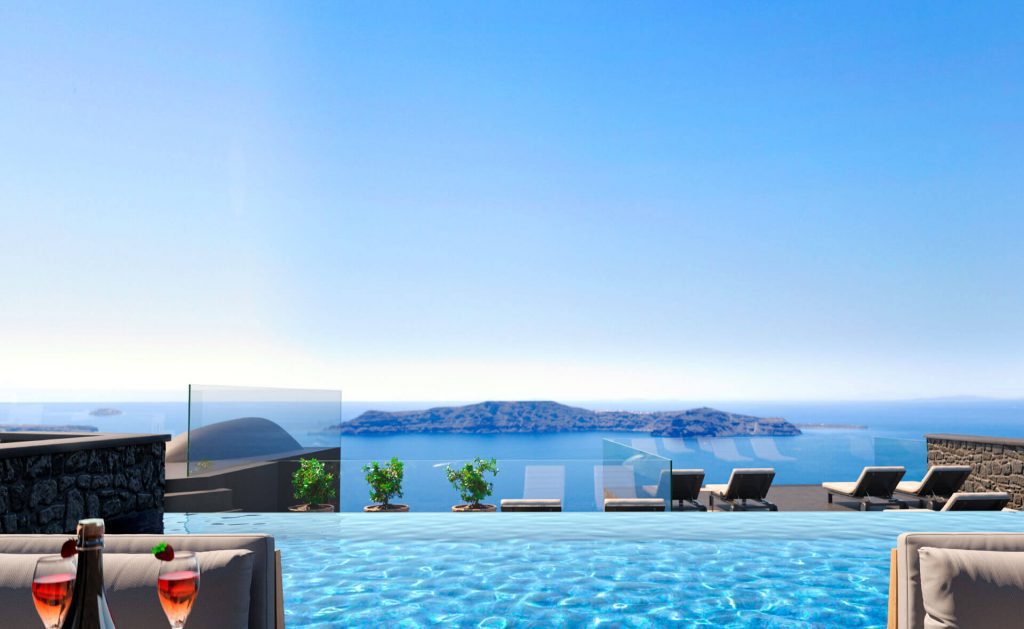
At the end of the day, what can beat walking to your luxury suite balcony and being greeted with expansive and boundless vistas of an awe-inspiring Caldera and an even more wondrous archipelago! And, all this, while pampering your palate with delicious local cuisine and caressing your throat with some of the finest wines in the world!
